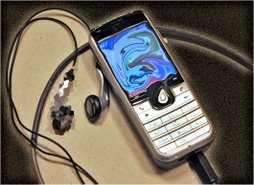Virtual Reality, Virtual Philosophy and the Screen Age
Towards a Critique of Virtual Rationality
The 19th and 20th centuries saw the exponential development of communication technologies that have radically altered the economy of the planet. A number of thinkers have come up with a new way of viewing the world where the line between reality and appearance is so blurred that it is hard to tell the differens.
Guy Debord ->'Society of Spectacle'
Unberto Eco ->'Hyper-reality'
Jean Baudrillard ->'Simularacum'
William Gibson ->'Cyberspace as Consensual Hallucination'
Gilles Deleuze and Felix Guattari ->'Becoming Media'
Precursors to Virtual Reality
Telegraph
Samuel Morse->1837
Morse's code
Telephone
1876 Alexander Graham Bell invented telephone. Forerunner of interactive Internet
Phonograph
Thomas Edison-> 1876 recorded and played back sound on wax cylinders. Led to cassettes, records, CDs and other sound-recording devices.
Radio
1895 ->Marconi. 1930s radio was modified to transmit and receive all manner of sounds.
Australia->Pioneered by ABC
Cinema
Mechanical device by shine light through many photos in a quick succession.
The Lumiere Brothers
Television
1926-> John Logie Baird first demonstrated television.
Late 1930s TV was ready to be marketed to a mass audience-> London and New York.
Elements of Virtual Language
For example a horror movie without elements of virtual language would not be the same. Some key concepts:
Music: used to suggest the mood of the story.
SFX (Sound effects): added to create maximum impact of the visualeffects from a better explosion to canned laughter and applause.
Framing: show key elements completely and at appropriatesizes, give plenty of headroom and don't let one important elementobscure another.
Composition: rather than merely centering an image, make sureit has a dynamic relationship to the frame by structuring triangularimages that utilize the effects of perspective.
Shot sizes: use a variety of shot sizes to create dynamiceffects.
Examples shot sizes:
BCU ->big close up
CU ->close up
LS ->long shot
Camera movements: moving the camera can also create a dynamic set of images.
Examples:
Dolly ->moving the camera towards or away from thesubject
Track ->moving the camera left or right, often alongtracks
Zoom ->from a fixed spot, using the camera to zoom in(tele) or zoom out (wide) on the subject
POV (point of view) ->the camera takes the view of the subject
Virtual Reality (VR)
A system that enables users to move and react in a computer-simulated environment. Allows users to sense and manipulate virtual objects as if they were real -> gives a feeling of being in a simulated world. Virtual worlds are created by mathematical models and computer programs.
How does VR work?
->engaging the senses through various hardware including goggles,headphones, gloves and body suits to the exclusion of the real world
->convergence of techniques used in simulation, animation andcomputer games - entertainment as the catalyst for other purposes.
Types of VR
Desktop VR = Window on the World (WOW)
Immersion VR = Head Mounted Display (HMD)
Projection VR = Computer Assisted Virtual Environment (CAVE)
Elements of VR
1. Vision :
- In the 1950s they tried to product 3D films. The way they did it was to film the same scene from two slightly different angels, and the movie had to be watched with polarised eyeglasses. The public did not like it and many of the new released films was put back into 2D.
2. Sound:
- Technology already available to create 3D sound through stereosound, binaural headphones.
-Essential elements: fidelity, volume and direction
3. Touch:
- Tactile - forces acting on the skin
-Force feedback - forces acting on muscles, joints, tendons
-Motion - platforms may provide real motion to augment simulatedmotion
-Manipulation - psychological illusion of existing in a virtual spaceusing the six degrees of freedom
4. Taste and smell:
Various hygiene and technical problems limit the development ofthese inputs, so they are still some way off.
VRML - Virtual Reality Modeling Language.
->Technology enabling online worlds to be rendered graphically.
->codeveloped by Mark Pesce, a man of considerable influence within the community of cyberspace builders and technicians.
Problems with VR
-Cartoon-like graphics limit the involvement of the user.
-The lag time means that the virtual environment is often slow toreact to human input.
-The user's perspective is limited in current manifestations anddoes not reach the normal human range of about 160 degree vision.
-The number of senses involved is limited to vision and sound (notouch, taste or smell).
-Kinaesthetic dissonance is the mismatch or absence of feedback.
Physiological issues and psychological issues
Subscribe to:
Post Comments (Atom)










No comments:
Post a Comment